Starlink secures first major airline Wi-Fi deal with Hawaiian Airlines
Monday, 25 April 2022 14:21
Hawaiian Airlines said April 25 it plans to offer free Starlink services on transpacific flights to and from Hawaii next year, becoming the first major airline to announce a deal with SpaceX’s high-speed broadband network.
The post Starlink secures first major airline Wi-Fi deal with Hawaiian Airlines appeared first on SpaceNews.
Planetary Decadal Survey says it's time for a mission to Uranus (and Enceladus too)
Monday, 25 April 2022 14:20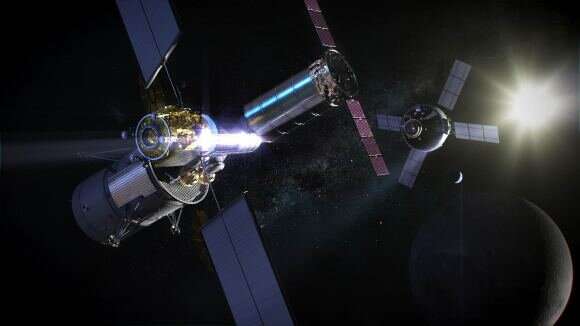
Since 2002, the United States National Research Council (NRC) has released a publication that identifies objectives and makes recommendations for science missions for NASA, the National Science Foundation, and other government agencies for the next decade. These reports, appropriately named Planetary Science Decadal Surveys, help inform future NASA missions that address the mysteries that persist in astronomy, astrophysics, earth science, and heliophysics.
On Thursday, April 19th, in a briefing in Washington D.C., the National Academies of Sciences, Engineering, and Medicine (NASEM) shared the main findings of the Planetary Science and Astrobiology Decadal Survey 2023–2032. The event was live-streamed and consisted of NASEM committee members discussing the key science questions, priority missions, and research strategies identified and recommended, followed by a Q&A session with the audience.
ManTech tracking foreign influence using open-source intelligence
Monday, 25 April 2022 13:40
ManTech developed a model that uses open-source intelligence to measure the level of foreign influence in any country
The post ManTech tracking foreign influence using open-source intelligence appeared first on SpaceNews.
A boom in Earth observation satellites creating new demands for intelligence
Monday, 25 April 2022 12:26
Crises such as the covid pandemic, climate change and the war in Ukraine are fueling demand for geospatial information
The post A boom in Earth observation satellites creating new demands for intelligence appeared first on SpaceNews.
Capella raises $97 million to expand radar constellation
Monday, 25 April 2022 12:00
Capella Space raised $97 million in a Series C investment round.
The post Capella raises $97 million to expand radar constellation appeared first on SpaceNews.
Orbital Insight brings Satellogic data into its platform
Monday, 25 April 2022 11:00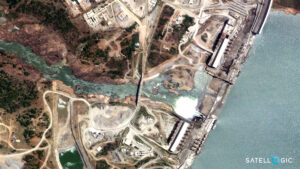
Geospatial intelligence company Orbital Insight announced plans April 25 to bring high-resolution imagery from Satellogic, an Earth observation company based in Argentina, into its geospatial intelligence platform.
The post Orbital Insight brings Satellogic data into its platform appeared first on SpaceNews.
Hubble observations used to answer key exoplanet questions
Monday, 25 April 2022 10:00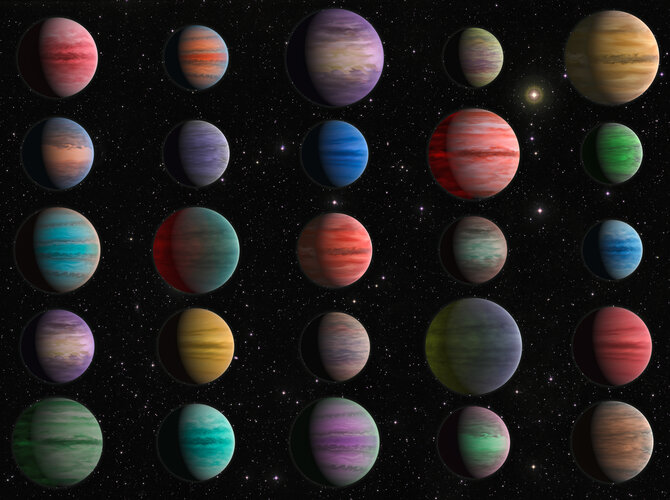 Image:
Hubble observations used to answer key exoplanet questions
Image:
Hubble observations used to answer key exoplanet questions U.S. ASAT ban meant to support U.N. discussions on space threats
Monday, 25 April 2022 09:50
A State Department official said the Biden administration’s announcement of a ban of one kind of ASAT weapon tests was timed to support discussions at an upcoming United Nations forum on norms of behavior in space.
March in space science
Monday, 25 April 2022 08:55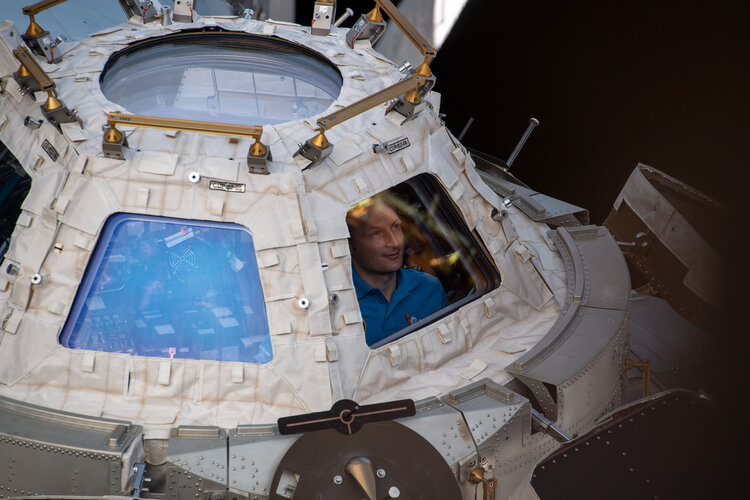
As the last days in space for ESA astronaut Matthias Maurer near and he prepares the European space laboratory Columbus for his colleague ESA astronaut Samantha Cristoforetti, European scientific endeavours on the International Space Station in March continued.
Crew of first private flight to ISS head back to Earth
Monday, 25 April 2022 07:45 The crew of the first fully private mission to the International Space Station departed the orbiting laboratory on Monday to head back to Earth.
The three businessmen and a former NASA astronaut had spent more than two weeks on the station on a history-making mission organized by startup company Axiom Space.
The SpaceX capsule undocked from the ISS at 0110 GMT for the return trip and was
The crew of the first fully private mission to the International Space Station departed the orbiting laboratory on Monday to head back to Earth.
The three businessmen and a former NASA astronaut had spent more than two weeks on the station on a history-making mission organized by startup company Axiom Space.
The SpaceX capsule undocked from the ISS at 0110 GMT for the return trip and was Smiling Sam
Monday, 25 April 2022 07:03 Image:
Image:
ESA astronaut Samantha Cristoforetti is all smiles after arriving at NASA’s Kennedy Space Center in Florida, USA, last week with NASA astronauts Kjell Lindgren, Bob Hines and Jessica Watkins.
Collectively known as Crew-4, the astronauts flew in from Houston, Texas, USA, and are spending the days ahead in quarantine before being launched this week to the International Space Station on the SpaceX Crew Dragon Freedom.
“This is getting real,” said Samantha. “It’s very emotional for me, that this final stretch to the launchpad has started with the landing here, on this runway.” Samantha recalled her childhood fascination watching the
Kleos unveils dedicated, taskable RF monitoring missions
Monday, 25 April 2022 05:00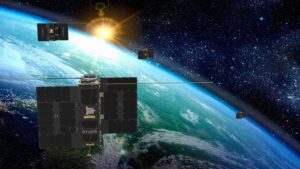
Kleos Space announced plans April 25 to offer customers dedicated, taskable radio frequency monitoring capabilities.
The post Kleos unveils dedicated, taskable RF monitoring missions appeared first on SpaceNews.
Ax-1 undocks from space station after extended stay
Monday, 25 April 2022 00:58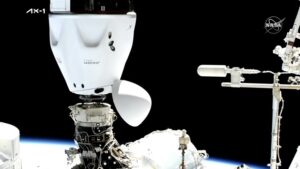
A Crew Dragon undocked from the International Space Station April 24 carrying four private astronauts who spent nearly twice as long on the station as originally planned.
The post Ax-1 undocks from space station after extended stay appeared first on SpaceNews.
Crew of first private flight to ISS prepare for Earth return
Sunday, 24 April 2022 17:12
The crew of the first fully private mission to the International Space Station was set on Sunday to leave the orbiting laboratory and head back to Earth.
The three businessmen and a former NASA astronaut had spent more than two weeks on the station on a history-making mission organized by startup company Axiom Space.
A SpaceX capsule was scheduled to undock from the ISS at 8:55 pm (0055 GMT Monday) for the return trip, before landing in the ocean off the coast of Florida on Monday around 1:00 pm (1700 GMT).
The four men—three who paid tens of millions of dollars each for the rare chance to take part in the mission, and former astronaut Michael Lopez-Alegria, who holds dual US-Spanish citizenship—were originally scheduled to spend only eight days on the space station.
But bad weather on Earth forced repeated delays in their return.
Private passengers Larry Connor, an American who heads a real estate company, Canadian businessman Mark Pathy and Israeli former fighter pilot and entrepreneur Eytan Stibbe had blasted off from Florida on April 8, reaching the ISS a day later.
China to conduct asteroid deflection test around 2025
Sunday, 24 April 2022 11:07
China will aim to change the trajectory of a potentially threatening asteroid with a kinetic impactor test as part of plans for a planetary defense system.
The post China to conduct asteroid deflection test around 2025 appeared first on SpaceNews.
